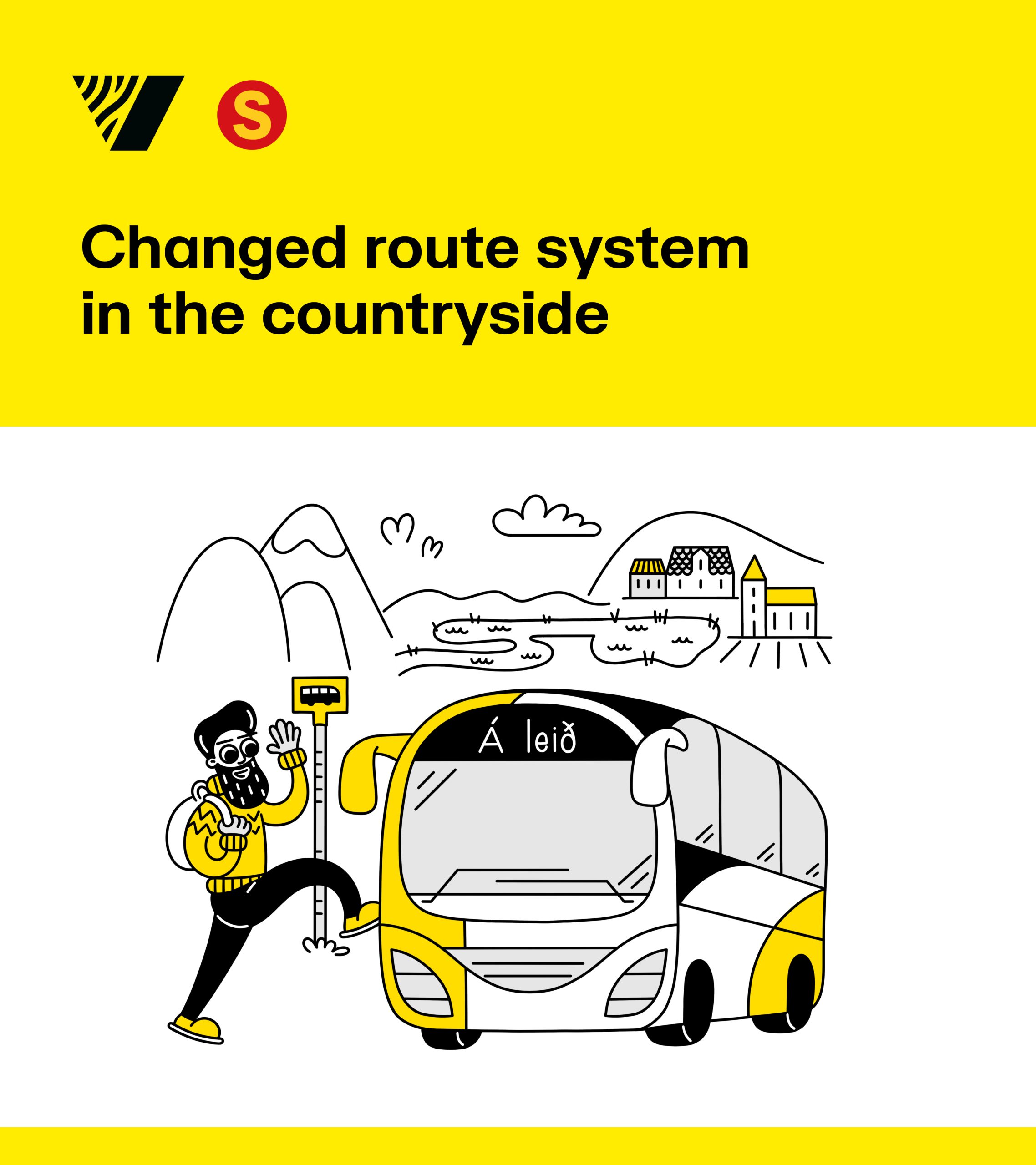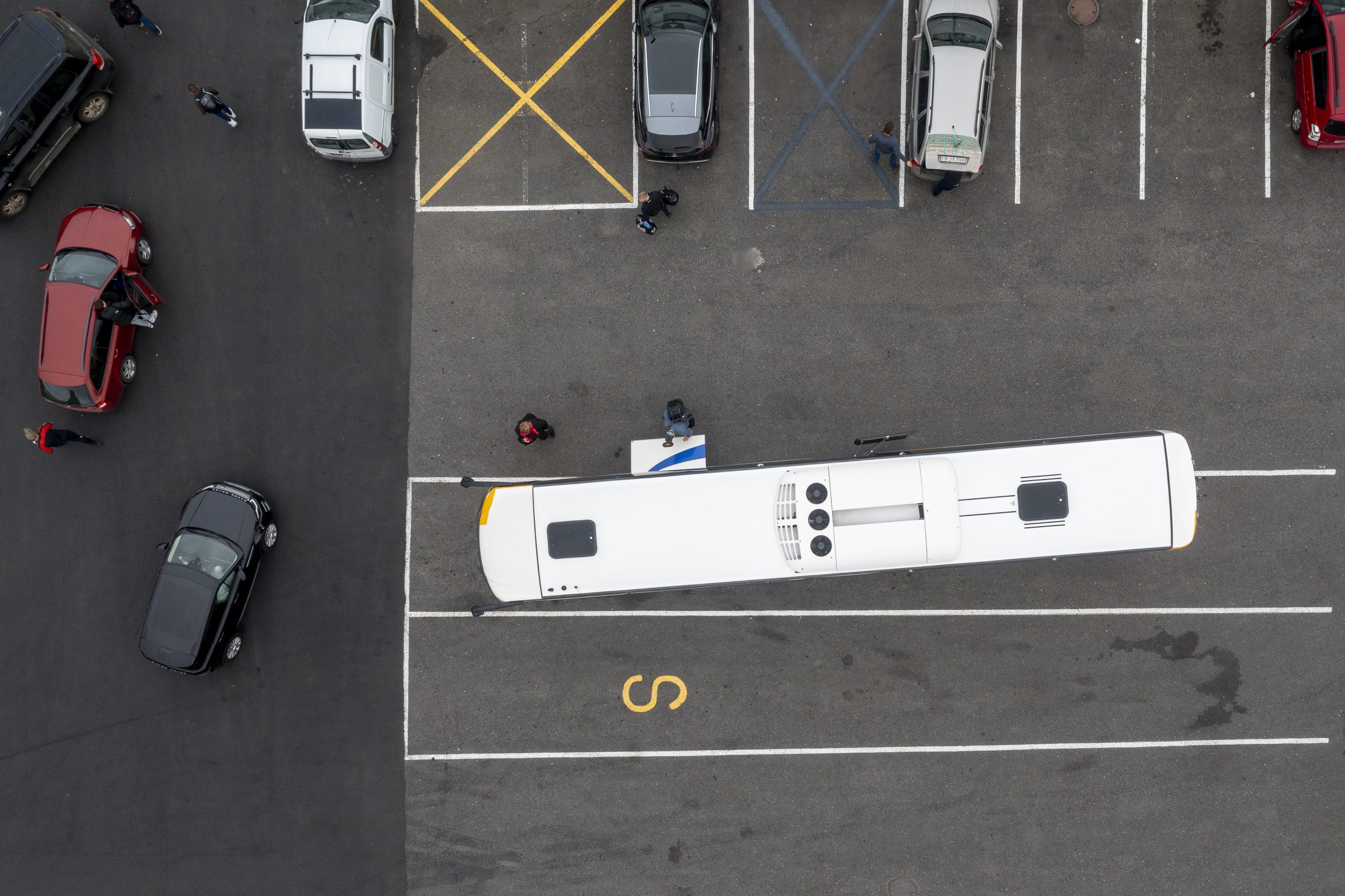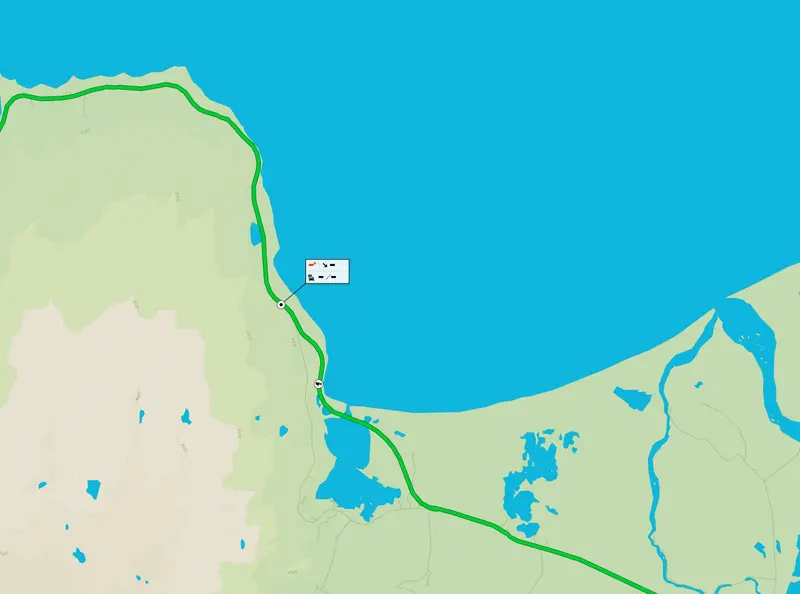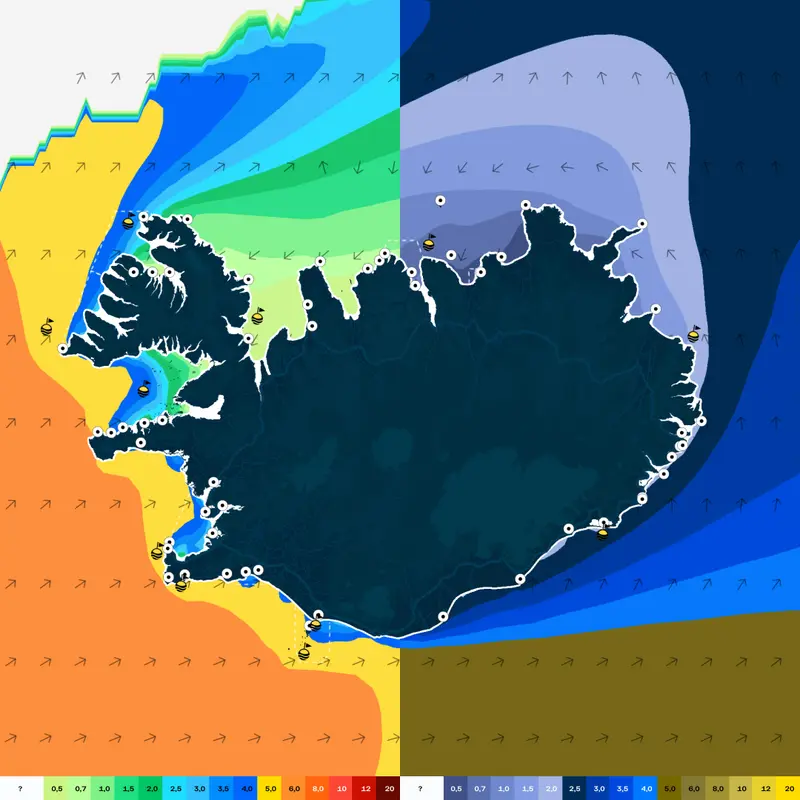20 nóvember 2025Regional Bus Network Changes
Regional Bus Network Changes
Changes to the provincial bus network will take effect on 1 January 2026. The project is part of a comprehensive review of the network, which has remained largely unchanged since 2012. At the same time, four new service contracts for bus operations will also take effect, covering Suðurnes, South Iceland, West and North Iceland, and North and Northeast Iceland.

The aim of the review is to make the rural bus service an attractive option for current and future users by:
- integrating the route network with local urban transport systems
- connecting services to domestic airports and ferry terminals
- preparing the network for the energy transition
- simplifying ticket purchasing for users
The provincial bus network covers all regions of the country, and its operations are divided into five contract areas: East Iceland, North and Northeast Iceland, West and North Iceland, Suðurnes, and South Iceland. The network is extensive and wide-ranging. Today, it consists of 30 routes operated by 35 buses, but as of the new year, two new routes will be added and the fleet will increase to a total of 38 buses.
The provincial bus service has a diverse user base, which can broadly be divided into two groups. On the one hand are those who use the system daily to travel to work or school, and on the other are those who use it less frequently and mainly for long-distance travel.
All key information about the new route network can be found on the Strætó website.
Preparation, processing, and tendering
From the start of the project, the objective was to review the existing system rather than design a new one from scratch, as the 2012 network is fundamentally well designed. However, the system has not been updated regularly as needed for public transport to keep pace with the continuously changing travel habits of residents.
The project formally began in the spring of 2024 with consultation meetings held across the country with stakeholders. These meetings provided invaluable insight into the communities currently served by the provincial bus network.
The analytical phase of the project was based on the outcomes of the consultation meetings, operational data from the Icelandic Road and Coastal services (IRCA) provincial bus service database, and the expertise of IRCA’s staff. Engineering firm VSÓ was also brought in to assist with the development of timetables, route layouts, and vehicle rotations, all of which were based on the results of the data analysis.
When the final draft of the project was completed in January 2025, five presentation meetings were held for municipal associations and municipalities, where the results for each tender area were introduced. Finally, four of the five rural bus tender areas were advertised in March, and bids were opened in June. The lowest bidders were GTs ehf. for South Iceland, Bus4u ehf. for Suðurnes, Hópbílar ehf. for West and North Iceland, and Fjallasýn Rúnars Óskarssonar ehf. for North and Northeast Iceland.

Markmiðið er að landsbyggðarvagnar séu aðlaðandi kostur fyrir núverandi og framtíðarnotendur.
Key changes
Clearer distinction between service routes
The most significant change to the route network is the separation of routes that serve, on the one hand, work and school commuting, and on the other hand, long-distance travel. The timetables for the commuter routes will become more reliable, as delays that currently occur on longer routes—due to weather conditions or other incidents—have a substantial impact on passengers who rely on the same buses to travel home after work or school.
Increased frequency during peak hours
- Bus frequency will increase during the morning and afternoon peak periods, primarily on routes that travel into the capital area.
During peak hours, the time between departures will generally be reduced to 1 hour instead of the current 1.5 to 2 hours.
More reliable transport
- The scheduling and frequency of routes serving work and school commuting areas in rural regions will be improved. The number of trips between Þorlákshöfn and Hveragerði will increase from three to five, and an early-morning service at 05:12 will be added to Route 89 to align with Isavia’s morning shifts at Keflavík Airport.
- Timetables will be aligned with IRCA’s winter service operations.
- Buses will be stationed within rural work- and school-commuting areas to reduce the risk of cancelled trips due to impassable mountain roads, avalanches, or high winds.
- Layover points will be located with regard to weather and geographic conditions. The layover point for Route 57 in Borgarnes will be moved to Staðarskáli, taking into account conditions on Holtavörðuheiði, Vatnsskarð, and Öxnadalsheiði. Stop times in Staðarskáli will be significantly shorter.
Enhanced scheduling of long-distance services
- The scheduling of long-distance routes will be arranged so that passengers can travel in the late afternoon..
- Students living in dormitories will be able to take the bus after school on Fridays and return in the late afternoon on Sundays.
- Those who need to travel farther to access healthcare services will no longer have to stay more than one night before being able to return home on the next available bus.
- Driving within urban areas will be shortened by reducing the number of stops. In Reykjanesbær, the number of bus stops will be reduced from eight to two, and in Akranes from eight to four.
- Service will be discontinued in areas already covered by other rural bus routes. Route 57 will no longer enter Akranes.
Connections to other route networks
Another change is the integration of the rural bus network with local urban bus systems. According to government policy, the role of the provincial bus network is to connect towns and municipalities, while local transport within urban areas is the responsibility of the municipalities. By integrating the networks, the user experience will improve, journeys will become more seamless, and unnecessary waiting times during transfers will be minimized.
Connection with the Capital Area Transport Network
The provincial bus network has access to the capital area’s transfer hubs, both today and in the future with the introduction of the Borgarlína rapid transit system.
Connection with Local Urban Networks in Rural Areas
Provincial bus services have access to transfer hubs in the urban centres of municipalities, including those planned for the future. Work is underway with municipalities to align the timetables of both networks so that users can benefit from better coordination.
Connection with Domestic Airports
Connections to domestic airports will be significantly improved from the beginning of the new year when rural buses begin operating to and from Akureyri Airport. IRCA is working with Isavia on the development of a bus stop at the apron by the new terminal building. Selected timetable departures will be coordinated with the most reliable Icelandair flights. These services will benefit both residents outside Akureyri as well as those living in the town.
Public bus access to Keflavík Airport is still under development in cooperation with Isavia and public authorities through other channels, and is therefore not part of this review.

Notendahópurinn samanstendur aðallega af farþegum sem sækja vinnu og skóla eða nýta sér vagnana fyrir langferðir.
Energy Transition
A foundation has been laid for shifting the provincial bus fleet to clean energy by separating routes that enter the capital area from the long-distance routes. This separation was done not only to improve services on both networks, as previously described, but also to create the operational flexibility needed to charge vehicles between trips. Due to the current lack of charging infrastructure for larger vehicles, it was decided not to require clean-energy buses in this tender but to postpone that requirement until the next tender, which will take effect in 2–4 years.
GTs ehf., the lowest bidder for the South Iceland contract area, will nevertheless supply electric buses on almost all routes during the contract period. Buses operating between Selfoss and Reykjavík, between Þorlákshöfn and Hveragerði, from Reykjavík east to Vík, and throughout the Uppsveitir region will all be powered by clean energy.
- This means that public transport between Vestmannaeyjar and Reykjavík will be fully powered by clean energy: the hybrid ferry Herjólfur IV and the electric buses operating on routes 51 and 53.
Simplifying Ticket Purchasing
Part of the project also involved reviewing the fare zones of the rural bus network to simplify ticket purchasing, as there is currently inconsistency between regions in the fares passengers pay. The introduction of new fare zones is not part of this project but will be included in the new fare system. Vegagerðin plans to implement a ticketing system from FARA AS, the same provider that developed the Klappið system for Strætó bs.
The next steps include reviewing the remaining routes and tender areas, implementing clean-energy buses across the rural network, and developing bus stops and transfer hubs. The main challenge in the coming years will be to operate the rural bus network in a way that allows for continuous updates, ensuring that the system remains aligned with the service needs of residents across the country.








